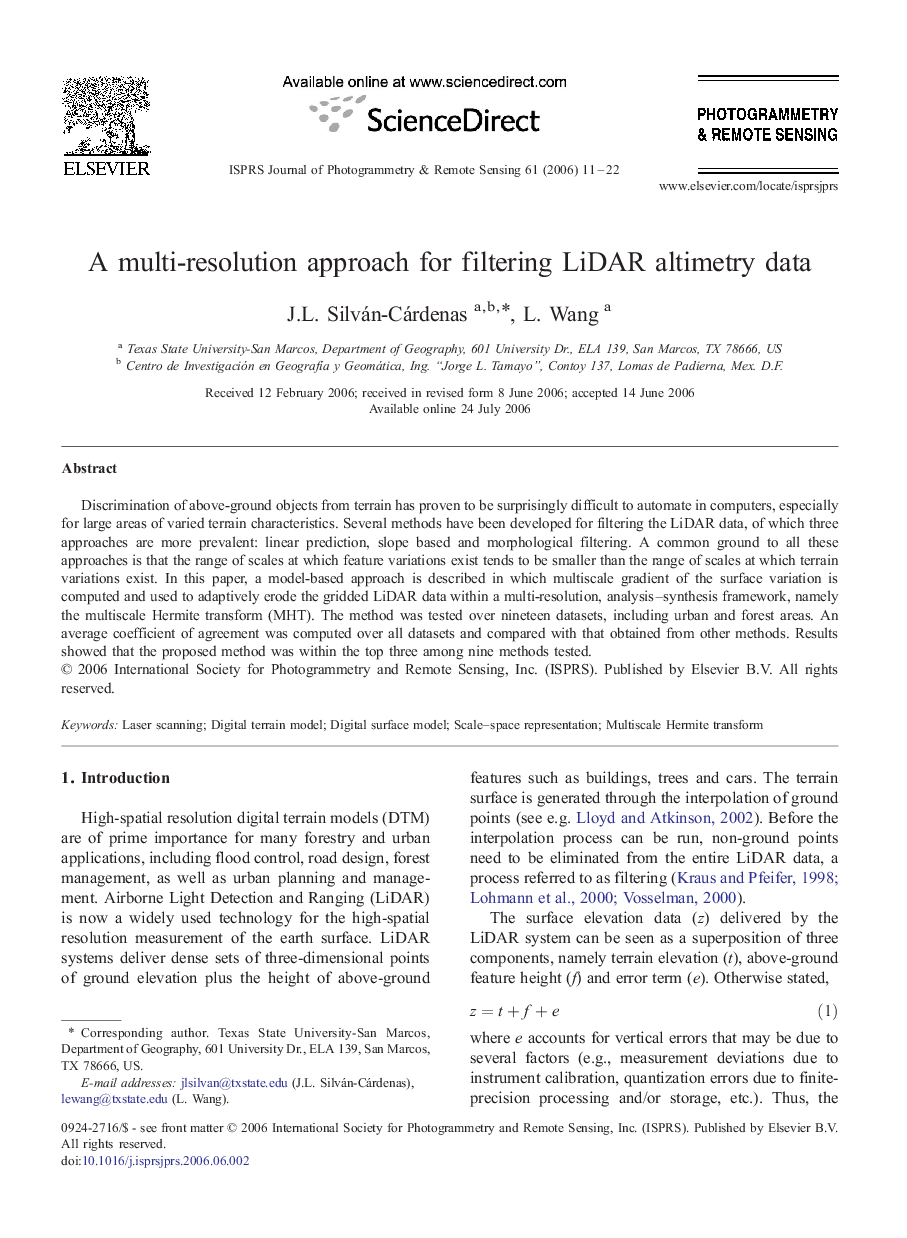| Article ID | Journal | Published Year | Pages | File Type |
|---|---|---|---|---|
| 555270 | ISPRS Journal of Photogrammetry and Remote Sensing | 2006 | 12 Pages |
Discrimination of above-ground objects from terrain has proven to be surprisingly difficult to automate in computers, especially for large areas of varied terrain characteristics. Several methods have been developed for filtering the LiDAR data, of which three approaches are more prevalent: linear prediction, slope based and morphological filtering. A common ground to all these approaches is that the range of scales at which feature variations exist tends to be smaller than the range of scales at which terrain variations exist. In this paper, a model-based approach is described in which multiscale gradient of the surface variation is computed and used to adaptively erode the gridded LiDAR data within a multi-resolution, analysis–synthesis framework, namely the multiscale Hermite transform (MHT). The method was tested over nineteen datasets, including urban and forest areas. An average coefficient of agreement was computed over all datasets and compared with that obtained from other methods. Results showed that the proposed method was within the top three among nine methods tested.
